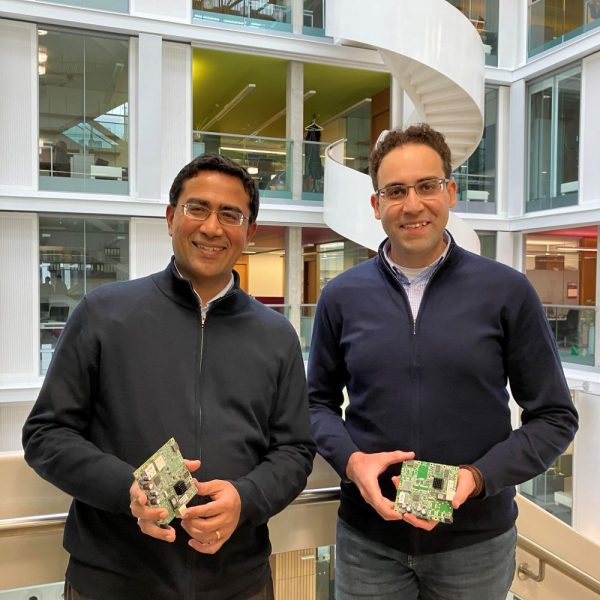WhiteHaul Tech Can Push 1Gbps Wireless Broadband Over 10km+

A spinout from a team at the University of Edinburgh in Scotland, called WhiteHaul, has secured £275k from Scottish Enterprise (SE) to develop a novel spectrum aggregation technology that claims to enable “high speed long-distance” backhaul links that “cannot currently be commercially achieved by existing fibre or wireless technologies.”
The problem with transmitting gigabit class broadband speeds over long distances is that they tend to suffer from high levels of radio interference, which often results in much slower performance than desired. WhiteHaul’s new technology attempts to manage this radio interference, resulting in more reliable network connectivity.
The announcement doesn’t provide much in the way of technical information to back all of this up. But the spinout’s website clarifies that their system is based around a Non-Line of Sight (NLOS) solution (good for sending signals over challenging terrain – Scotland has no shortage) and can achieve speeds up to 1 Gbit/s over distances of over 10km with a 99.9999% availability.
Advertisement
The technology was developed as part of Dr Mohamed Kassem’s PhD at the University of Edinburgh’s School of Informatics, supervised by Professor Mahesh Marina, and the team is being supported to spin out by Edinburgh Innovations, the University’s commercialisation service.
Professor Marina said:
“WhiteHaul will play an important role in supporting the UK Government’s ambition to bring gigabit-capable coverage to 85% of the UK by 2025, and close to 100% as soon as possible thereafter. We have seen from previous work the vital importance of rural connectivity for agriculture, businesses, healthcare and education.”
We should point out that other companies, such as Curvalux, have also developed wireless and Microwave technologies that claim to be capable of pushing a 2Gbps total throughput using Wi-Fi 5 (802.11ac) over distances of “up to” a range of 10km (potentially 5Gbps via Wi-Fi 6). But that solution, like many others, is a Line of Sight (LOS) technology and so is most effective when it can clearly see its target in the distance.
The name of this new technology also makes clear that this solution is less about serving individual premises and more about delivering high speed data capacity (backhaul) into remote locations, which other businesses or broadband networks can then harness to fuel their services. We should point out that full fibre networks have no technical problems with reaching long distances, the issue is usually more of an economic one (high build costs).
Mark is a professional technology writer, IT consultant and computer engineer from Dorset (England), he also founded ISPreview in 1999 and enjoys analysing the latest telecoms and broadband developments. Find me on X (Twitter), Mastodon, Facebook, BlueSky, Threads.net and Linkedin.
« CityFibre Win Rural Cambridgeshire Gigabit Broadband Rollout Contract UPDATE





















































If anyone is interested, Kassem’s PhD thesis, ‘On three use cases of multi-connectivity paradigm in emerging wireless networks’, is available to read online/download at https://era.ed.ac.uk/handle/1842/36936
Thank you! I am interested and will download it. Some light reading for later.
Unless it is a way cheaper than existing solutions they basically reinvented the wheel.
John, it will be a lower cost per premise passed than all existing rural backhaul solutions more in line with what can be achieved by a fibre operator in urban areas. Reach out to me at info@intelligensconsulting.com if you want to understand more.
This is a potential game-changer for hard to reach locations everywhere in the world.
We wish the Whitehaul team every success in their journey.